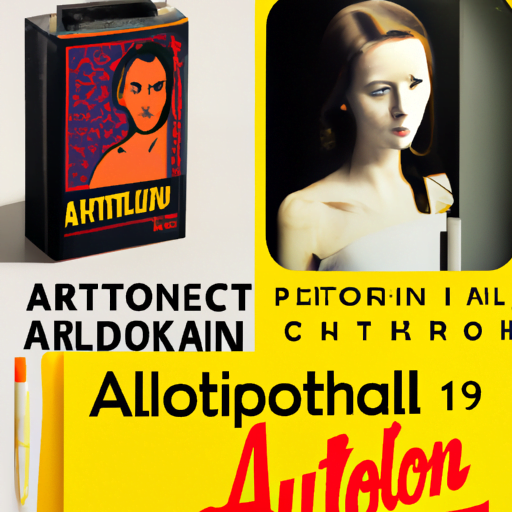
-
Table of Contents
Typography in Packaging Design: Enhancing Product Appeal

Typography plays a crucial role in packaging design, as it has the power to enhance the overall appeal of a product. When done right, typography can effectively communicate a brand’s message, create a strong visual impact, and influence consumer purchasing decisions. In this article, we will explore the importance of typography in packaging design and how it can be used to enhance product appeal.
The Role of Typography in Packaging Design
Typography is more than just selecting a font for packaging. It involves the careful consideration of various elements such as font style, size, color, spacing, and hierarchy. These elements work together to create a visual language that communicates the brand’s personality, values, and product attributes.
One of the primary roles of typography in packaging design is to grab the attention of consumers. In a crowded marketplace, where numerous products compete for attention, typography can be the differentiating factor that makes a product stand out. A well-designed typographic treatment can catch the eye and create a memorable first impression.
Typography also helps in conveying information effectively. Whether it’s the product name, key features, or usage instructions, typography ensures that the information is legible and easily understandable. The right choice of font style and size can make a significant difference in readability, especially when dealing with small packaging or complex product descriptions.
Creating a Strong Visual Impact
Typography has the power to evoke emotions and create a strong visual impact. Different font styles and treatments can convey different moods and feelings. For example, a bold and modern font may communicate a sense of confidence and innovation, while a handwritten script font may evoke a feeling of nostalgia or authenticity.
Color is another important aspect of typography that can enhance the visual impact of packaging design. The choice of color can evoke specific emotions and associations. For instance, warm colors like red and orange can create a sense of excitement and energy, while cool colors like blue and green can convey a feeling of calmness and trust.
Case Study: Coca-Cola
Coca-Cola is a prime example of how typography can create a strong visual impact in packaging design. The brand’s iconic logo, written in a unique script font, has become instantly recognizable worldwide. The flowing letters and vibrant red color evoke a sense of happiness, joy, and nostalgia. The typography used by Coca-Cola has played a significant role in establishing its brand identity and creating a strong emotional connection with consumers.
Influencing Consumer Purchasing Decisions
Typography can also influence consumer purchasing decisions. The way information is presented on packaging can affect how consumers perceive the product and its value. A well-designed typographic hierarchy can guide consumers’ attention and highlight key selling points, making the product more appealing.
Typography can also convey a sense of quality and craftsmanship. High-end products often use elegant and sophisticated typography to communicate their premium positioning. On the other hand, playful and whimsical typography can be used to target a younger audience or create a sense of fun and excitement.
Case Study: Apple
Apple is known for its minimalist and sleek packaging design, which is heavily influenced by typography. The company’s use of clean, sans-serif fonts and generous white space creates a sense of simplicity, elegance, and sophistication. This typographic approach aligns with Apple’s brand image of innovation, quality, and user-friendly design, influencing consumers to perceive their products as premium and desirable.
Best Practices for Typography in Packaging Design
When it comes to typography in packaging design, there are several best practices to keep in mind:
- Choose fonts that align with the brand’s personality and values.
- Consider legibility and readability, especially for small packaging or complex information.
- Create a typographic hierarchy to guide consumers’ attention.
- Use color strategically to enhance the visual impact and evoke desired emotions.
- Ensure consistency in typography across different packaging elements.
By following these best practices, brands can effectively utilize typography to enhance the appeal of their products and create a strong brand identity.
Summary
Typography plays a vital role in packaging design by enhancing product appeal. It grabs consumers’ attention, conveys information effectively, and creates a strong visual impact. Through the careful selection of font styles, colors, and typographic treatments, brands can influence consumer purchasing decisions and create a memorable brand identity. By following best practices, brands can leverage typography to create packaging designs that stand out in a crowded marketplace and leave a lasting impression on consumers.
